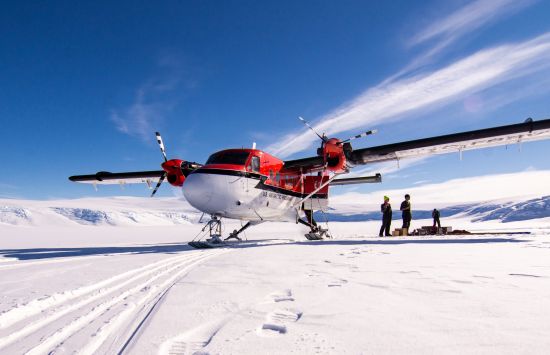LC-130s
Joint Task Force-Support Forces Antarctica (JTF-SFA) is the longest running joint task force in the nation, providing operational control to these one-of-a-kind ski-equipped aircraft.
- There are only 10 LC-130s in the world, and all are owned by the U.S. Air Force (New York Air National Guard 109th Airlift Wing).
- These aircraft support science and national interests across both poles.
- LC-130s are equipped with retractable skis that allow landing on snow and ice as well as on conventional runways.
- The aircraft are flown by the 109th Airlift Wing by a workforce of more than 220 operators, maintenance crew workers and technicians.
- They carry up to 42,000 lbs. of cargo or 92 passengers and can land virtually anywhere on the continent with advanced planning.
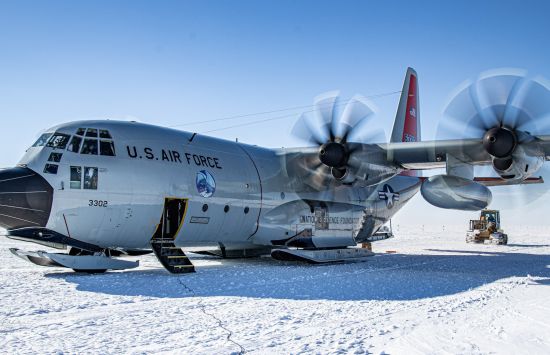
C-17 Globemaster
JTF-SFA also coordinates heavy airlift using the military’s largest cargo airframe.
- USAP support operates out of Joint Base Lewis-McChord in Washington state (62nd Airlift Wing).
- C-17s can carry more than 100,000 lbs. of cargo virtually anywhere in the world or up to 125 personnel.
- Annually, they move more than 2.5 million lbs. of supplies onto the continent to keep USAP operational.
- These large aircraft provide vital air-drop capabilities and are the only U.S. aircraft capable of a mid-winter evacuation.
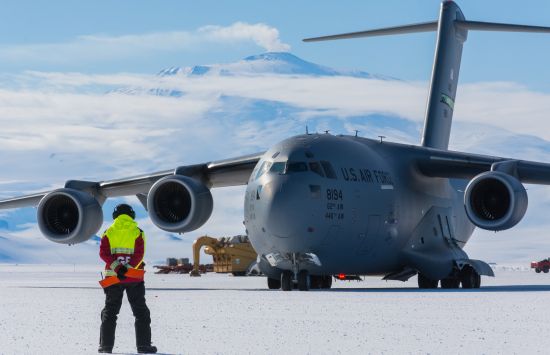
Airports
USAP annually builds and operates two fully operational airports with three permanent runways, plus up to 12 temporary landing sites.
- Williams Field is a sea-ice skiway first commissioned in the late 1950s.
- Phoenix Airfield is a wheeled runway built in 2017, replacing the older Pegasus Airfield.
- Both airfields are rebuilt each year because the buildings, fuel lines and other support equipment cannot be left in place over winter.
- Maintenance of the airports takes 17,000 hours of labor each year.
- The Federal Aviation Administration certifies the runways are ready for use at the start of each season.
- Removing wildlife from the runway is part of pre-flight checks.
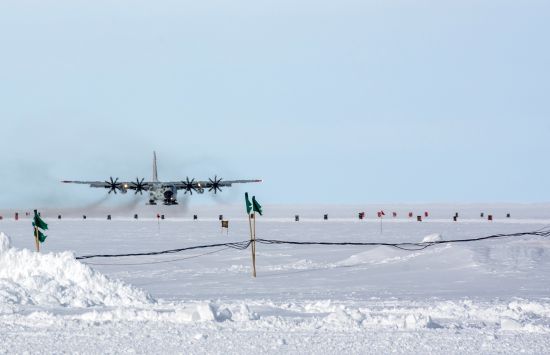
Air traffic control and weather forecasting
USAP provides air traffic control and weather forecasting for millions of miles of airspace.
- Air traffic control, called Mac Center, is operated jointly by the Naval Information Warfare Center and the JTF-SFA.
- USAP controls 1.6 million square miles of airspace during the summer, with flight-following capabilities covering 4 million square miles.
- Mac Center manages nearly 2,500 take-off and landing events for fixed-wing aircraft, plus another 11,000 events for helicopter operations each year.
- Weather forecasting for flight operations is done jointly between an on-station presence at NSF McMurdo Station and a “Remote Operating Facility” in South Carolina, enabling around-the-clock flight operations.
- Air operations during the summer require nearly 9,000 air, ground and maritime forecasts augmented by 5,000 synoptic, aviation and weather observations.
- USAP processes over 50,000 observations annually, captured from all three USAP stations, over 40 automated weather stations, and all field camps and ships.
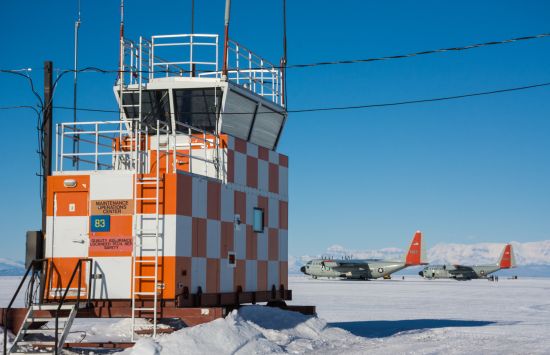
Fixed and rotary wing aircraft
USAP science teams access near-field camps using Baslers, Twin Otters and helicopters.
- USAP has three helicopters: one medium Bell 212 and two light Airbus A-350B3s, each capable of landings at altitudes up to 12,500 ft. above sea level.
- The DC-3T (BT-67) “Basler” medium lift aircraft provides transport of 20 passengers or 5,000 lbs. cargo.
- The USAP de Havilland DHC-6 “Twin Otter” provides access to deep field science camps, delivering scientists to hard-to-reach areas of scientific interest.
- The Twin Otter is also the mid-winter South Pole medevac transport, capable of operating in temperatures below -50°C.
- Both the Basler and the Twin Otter deploy to Antarctica through North, Central and South America via an eight-day transit across three continents.
